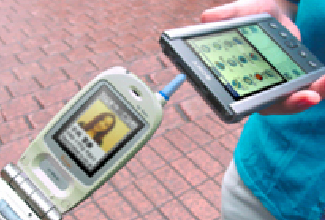Transboundary Research
Project from "Cybernetic Humanity"
Parallel Adaptation
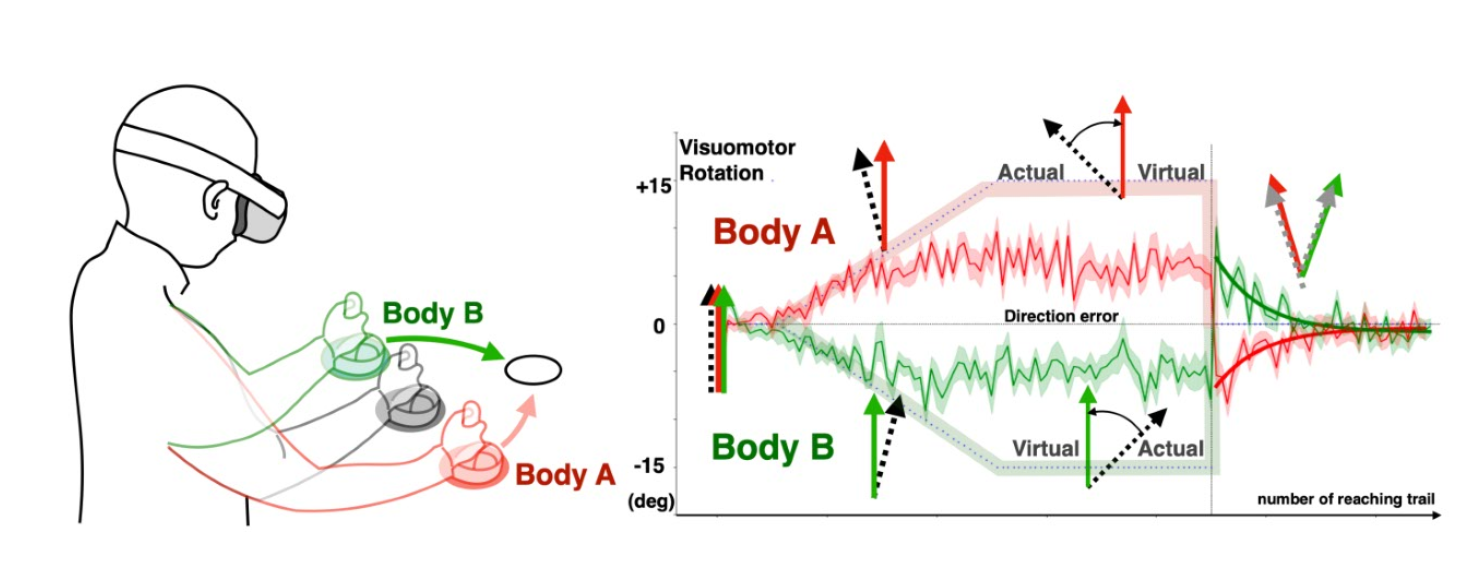
私たちは、1つの身体だけでなく、2つ、3つ、あるいはそれ以上の身体に拡張することができるでしょうか?この問いにヴァーチャル身体の運動適応という観点で、複数の回転運動適応を並列的に可能にする運動視覚条件を調査した研究です。
本研究は、笠原研究員による、コンピュータ技術を用いて人間の感覚に介入したり、人間の知覚を接続することで、工学的に知覚や認知を拡張、変容させる研究の枠組み「Superception(Super + perception)」の一つです。
Parallel Adaptation: Switching between Two Virtual Bodies with Different Perspectives Enables Dual Motor Adaptation
Adrien Verhulst, Yasuko Namikawa, Shunichi Kasahara (Sony CSL), The 21st IEEE ISMAR 2022 Full Paper.
Abstract
Virtual Reality (VR) lets us experiment embodiment. Here we investigate dual embodiment under the prism of dual motor adaptation. We asked participants (N=21) to perform reaching motions in VR with opposite gradual visuomotor perturbations. The participants sequentially switched between 2 VR bodies and had to adapt to the VR body’s perturbation (up to + 15deg for the VR body A, and – 15deg for the VR body B). We then designed a 2×2 within-subject study: 1 factor being the perspective (1st person or 3rd person), and 1 factor being the head rotation (without head rotation before the reaching motion or with head rotation before the reaching motion). We found that by providing strong visual cues between bodies (alternating symmetric perspective and/or symmetric head rotation), participants had little awareness of the perturbations, good adaptation, and large aftereffects in both VR bodies. Those elements are consistent with implicit dual adaptation. In contrast, a naive 1st person’s perspective resulted in little to no adaptation with a high cognitive load and no aftereffects.
Adrien Verhulst, Yasuko Namikawa, Shunichi Kasahara. 2011. “Parallel Adaptation: Switching between Two Virtual Bodies with Different Perspectives Enables Dual Motor Adaptation.” IEEE ISMAR 2022, 10.1109/ISMAR55827.2022.00031
Paper
Parallel Adaptation ISMAR2022 paper / download
Video
What if, we have two bodies at the same time? Can we embody both bodies in parallel? We investigate parallel embodiment under the prism of dual motor adaptation.

With one-directional gradual visuomotor rotations, we can adapt and correct that ‘single’ rotation implicitly through visual feedback.
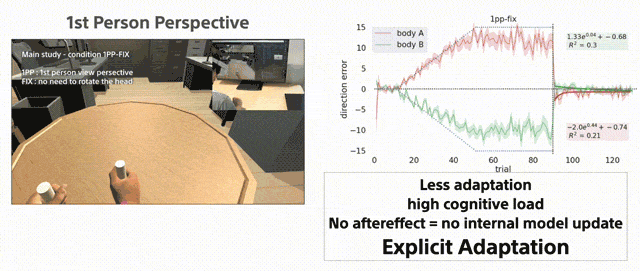
Then, what if we apply two opposite visuomotor rotations? Adapting two opposite rotations is highly dependent on explicit strategy, and is quite hard and cognitively demanding. This issue will be critical when we have two bodies as virtual bodies or telerobotic bodies
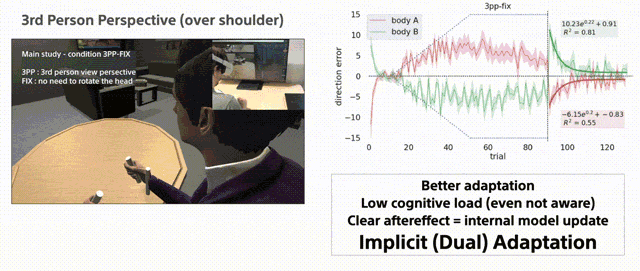
However, we found a way for dual adaptation in virtual reality. By providing spatial cues between bodies: alternating symmetric perspective, participants can adapt both opposite visuomotor rotations in parallel, and interestingly, little awareness of the rotation itself, like single gradual adaptation, aka. implicit adaptation.

Our found dual adaptation also shows consistency with the nature of implicit adaptation which is correlated with the updating internal model of our body. This gives us an intriguing connection to the research question about parallel embodiment from the point of body internal model in parallel.
This project will be presented at The 21st IEEE International Symposium on Mixed and Augmented Reality (ISMAR 2022).
This work was supported by JST Moonshot R&D “Cybernetic being” Project (Grant number JPMJMS2013).
Keywords
Members
Related News
同じリサーチエリアの別プロジェクト
Human Augmentation
笑顔で操作、幸せになる家電インターフェース
途上国向け義足
機器同士をつなぐ直観的でわかりやすいインターフェース
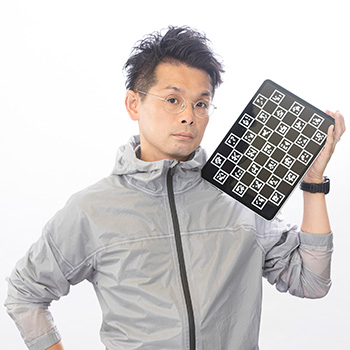

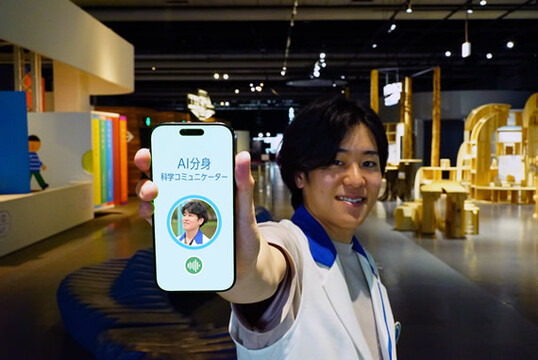
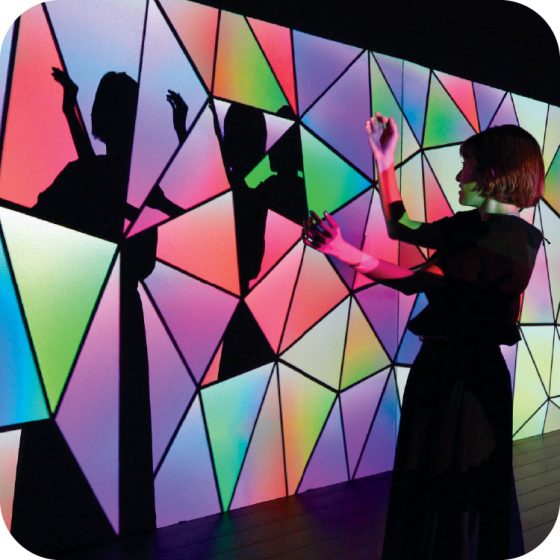
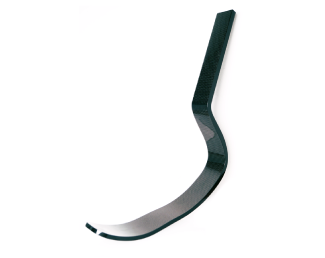
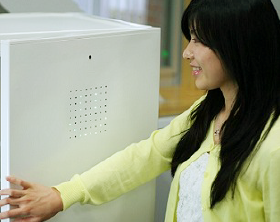
-1.png)
